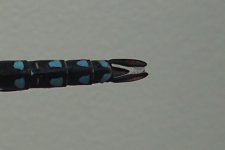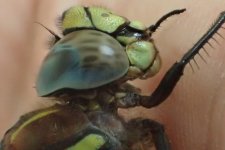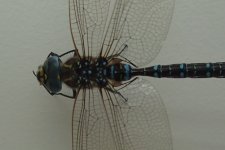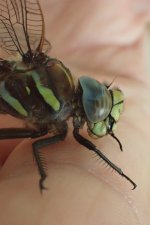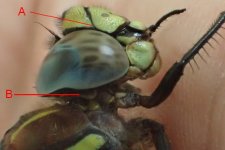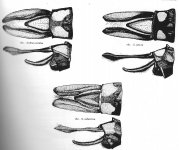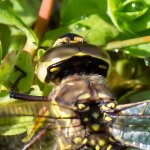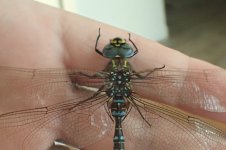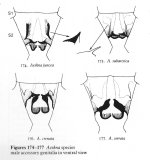Andy Adcock
Worst person on Birdforum

Frustrated at not being able to entirely, satisfy myself of the ID of my local Hawkers here in Russia, I today managed to net three of them for in the hand inspection.
I've been hyper vigilant given the influx of Southern Migrant Hawkers to Britain and hoping to bag one up here but no joy so far however, of the three I netted, two I'm sure were juncea but one, shows characters that maybe consistent with subarctica, especially the appendages.
I attach shots of the facial suture, appendages and leading edge which to the naked eye, didn't seem at all yellow. I'm also struggling to identify this 'yellow spot' behind the eyes of any of the ones I caught? I know it's not diagnostic but the eye pattern looks good for subarctica as does the body pattern, note the reduced yellow mark (compared to juncea) between the two, yellow body stripes, the rear of which in particular, looks narrower than it would be in juncea.
To condense my observations
1. Brown not yellow costa, good for subarctica.
2. Body pattern, good for subarctica.
3. Eye pattern, good for subarctica.
4. Appendages, good for subarctica.
I've been hyper vigilant given the influx of Southern Migrant Hawkers to Britain and hoping to bag one up here but no joy so far however, of the three I netted, two I'm sure were juncea but one, shows characters that maybe consistent with subarctica, especially the appendages.
I attach shots of the facial suture, appendages and leading edge which to the naked eye, didn't seem at all yellow. I'm also struggling to identify this 'yellow spot' behind the eyes of any of the ones I caught? I know it's not diagnostic but the eye pattern looks good for subarctica as does the body pattern, note the reduced yellow mark (compared to juncea) between the two, yellow body stripes, the rear of which in particular, looks narrower than it would be in juncea.
To condense my observations
1. Brown not yellow costa, good for subarctica.
2. Body pattern, good for subarctica.
3. Eye pattern, good for subarctica.
4. Appendages, good for subarctica.
Attachments
Last edited:




